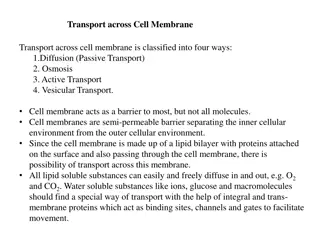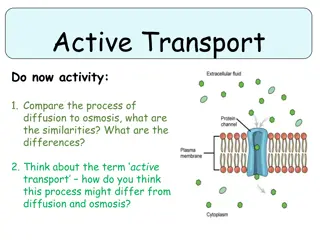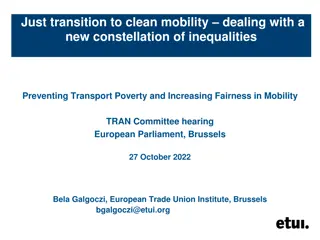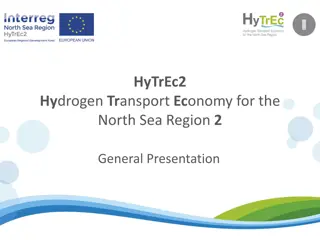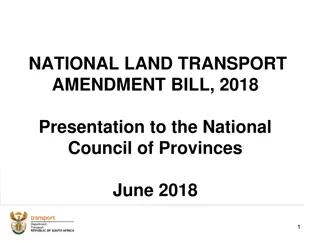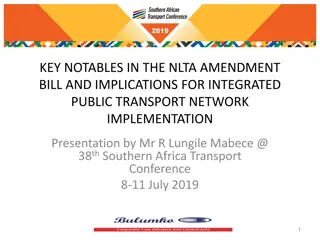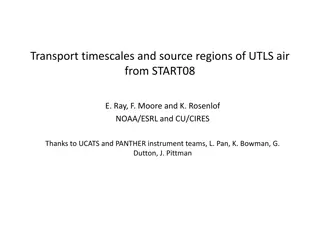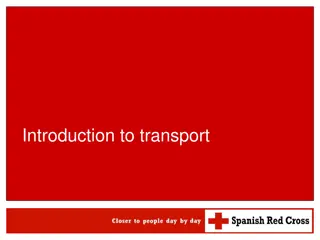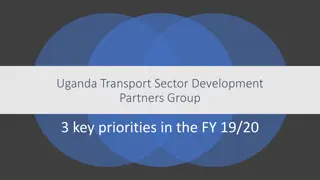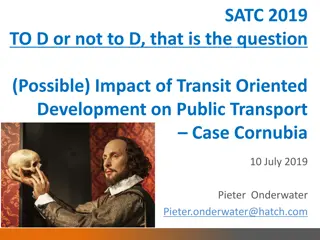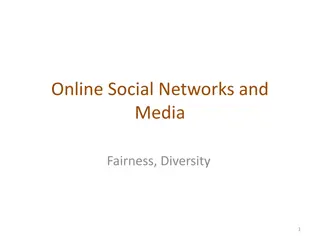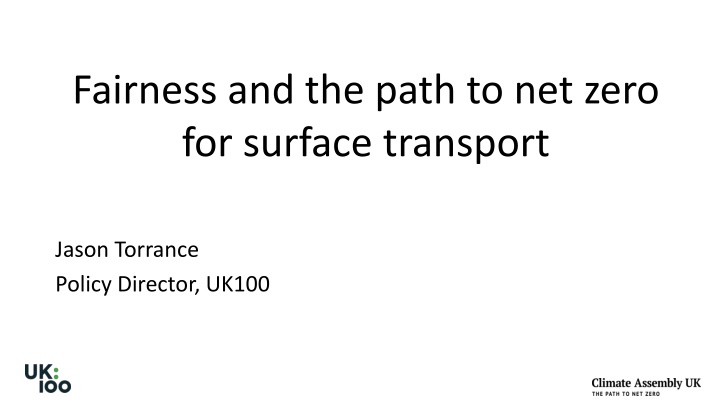
Understanding Inequality in Transport Systems
Explore how inequality impacts transportation, affecting access to opportunities, costs of travel, and disparities in mobility. Learn about the challenges faced by lower-income households and the future trends in transportation for a more equitable society.
Download Presentation

Please find below an Image/Link to download the presentation.
The content on the website is provided AS IS for your information and personal use only. It may not be sold, licensed, or shared on other websites without obtaining consent from the author. If you encounter any issues during the download, it is possible that the publisher has removed the file from their server.
You are allowed to download the files provided on this website for personal or commercial use, subject to the condition that they are used lawfully. All files are the property of their respective owners.
The content on the website is provided AS IS for your information and personal use only. It may not be sold, licensed, or shared on other websites without obtaining consent from the author.
E N D
Presentation Transcript
Fairness and the path to net zero for surface transport Jason Torrance Policy Director, UK100
What is inequality? - Income: the top 10% of the population have annual incomes of over 80,000, nine times the average income of bottom 10%. - Where people live: household income, after taxes and benefits and adjusting for family size, was 39,000 in London, compared to 25,000 in Northern Ireland and 27,000 in the North East. - Health: The gap in life expectancy at birth between the least and most deprived areas of the UK is around 9 years for males and 7 for females.
How inequality affects transport In relation to transport, inequality affects: - Opportunities for employment, education and training: Opportunities are dependent on transport services and infrastructure. - Access to transport: Access to travel choices that exist and are affordable. - Quality of life: Impact on health from air quality and opportunities for physical activity.
Costs of transport In relation to transport, inequality affects: - 40% of the lowest income households who do not have access to a car - Low-income households, who often spend a relatively large proportion of their income on commuting costs (around 25% compared with the average of approx.13%) - People living in rural areas who have few travel choices, and as a result have much poorer access to key services and employment opportunities via bus or rail.
Lower income households travel less Households with no car make roughly 30% fewer trips and cover almost 60% less trip distances than households with a car.
Costs of different travel options - Cost of motoring has decreased over last ten years (in real terms) while cost of rail and bus travel has increased. - Partly due recently to UK Government freezing fuel duty since 2011/12, costing the Treasury around 9 billion every year. However, - UK fuel duty is expected to raise 28.4 billion in 2019-20. - Revenues from fuel duty and other motor vehicle taxes are expected to decrease significantly with a move to electric and alternative fuelled vehicles.
Future of employment? - Electric vehicle sales (cars, vans and buses) are predicted to rise significantly in the coming years. Opportunities to transform workforce and profit from world leading low carbon technology exports. - Automation and technology will bring significant change to the future of work of low and middle skilled workers. - Changing layouts of towns and cities so that walking, cycling and public transport are prioritised requires a much increased labour force.

